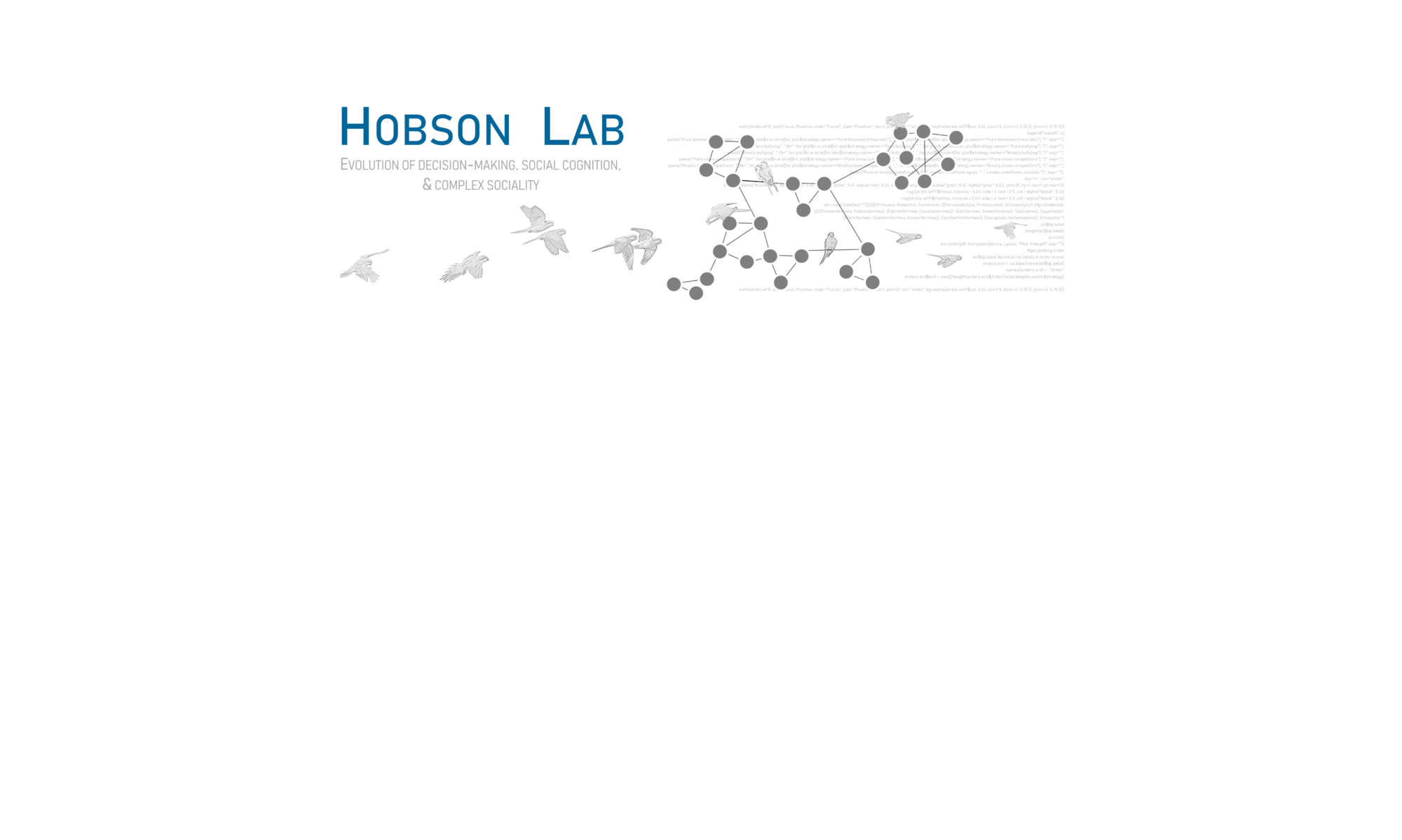Congratulations to Raven on a really fun empirical/modeling paper on movement and inferences about sociality in vampire bats. This work was part of the NSF grant my lab has with Gerry Carter.
Abstract
Social structure can emerge from hierarchically embedded scales of movement, where movement at one scale is constrained within a larger scale (e.g. among branches, trees, forests). In most studies of animal social networks, some scales of movement are not observed, and the relative importance of the observed scales of movement is unclear. Here, we asked: how does individual variation in movement, at multiple nested spatial scales, influence each individual’s social connectedness? Using existing data from common vampire bats (Desmodus rotundus), we created an agent-based model of how three nested scales of movement—among roosts, clusters and grooming partners—each influence a bat’s grooming network centrality. In each of 10 simulations, virtual bats lacking social and spatial preferences moved at each scale at empirically derived rates that were either fixed or individually variable and either independent or correlated across scales. We found that numbers of partners groomed per bat were driven more by within-roost movements than by roost switching, highlighting that co-roosting networks do not fully capture bat social structure. Simulations revealed how individual variation in movement at nested spatial scales can cause false discovery and misidentification of preferred social relationships. Our model provides several insights into how nonsocial factors shape social networks.





